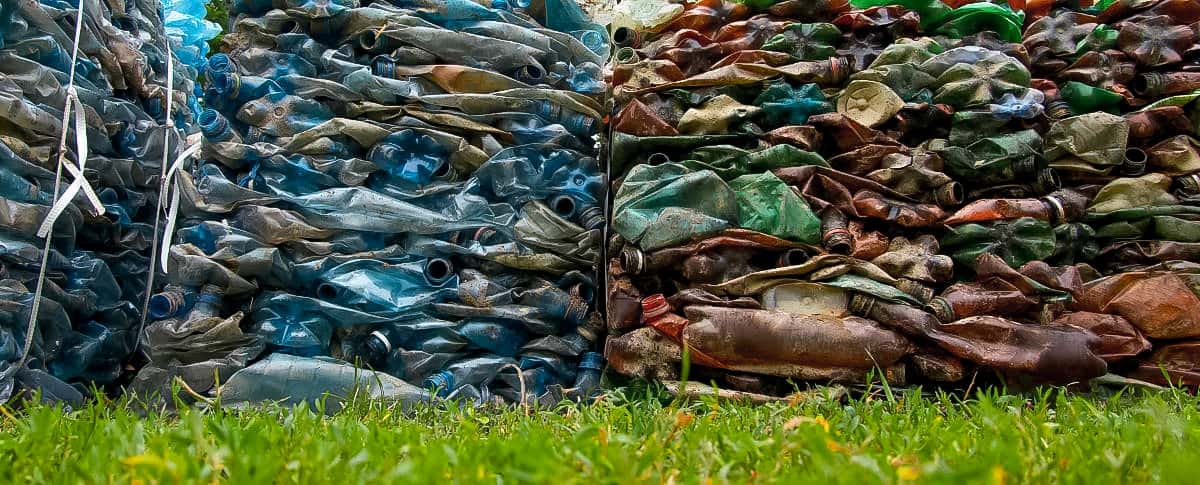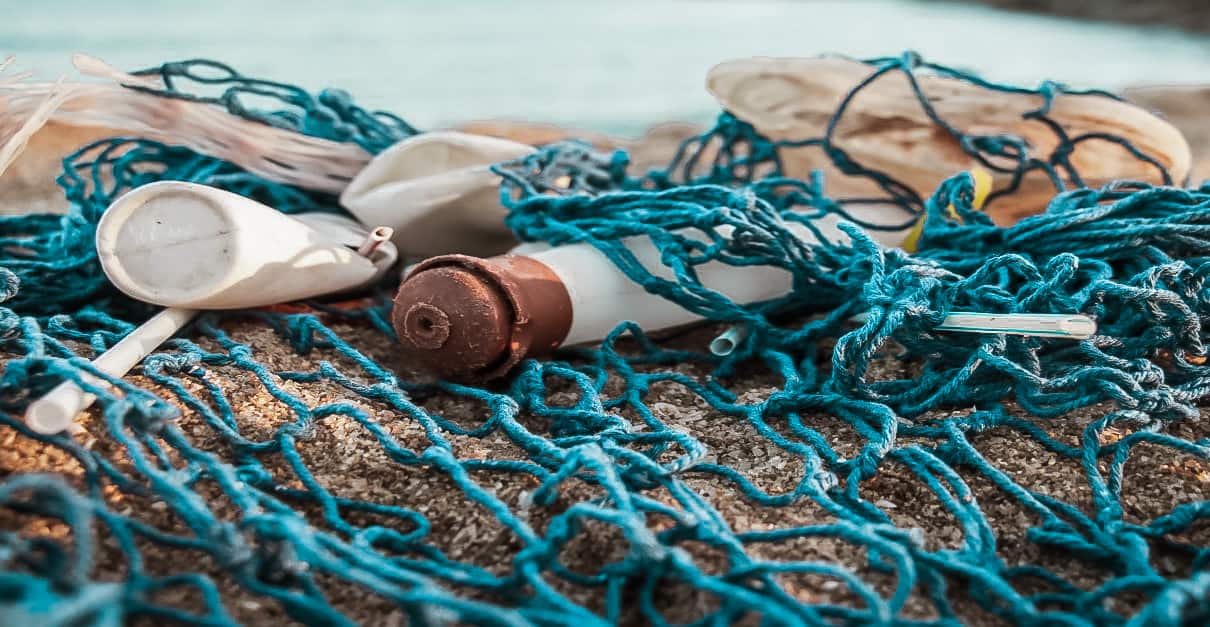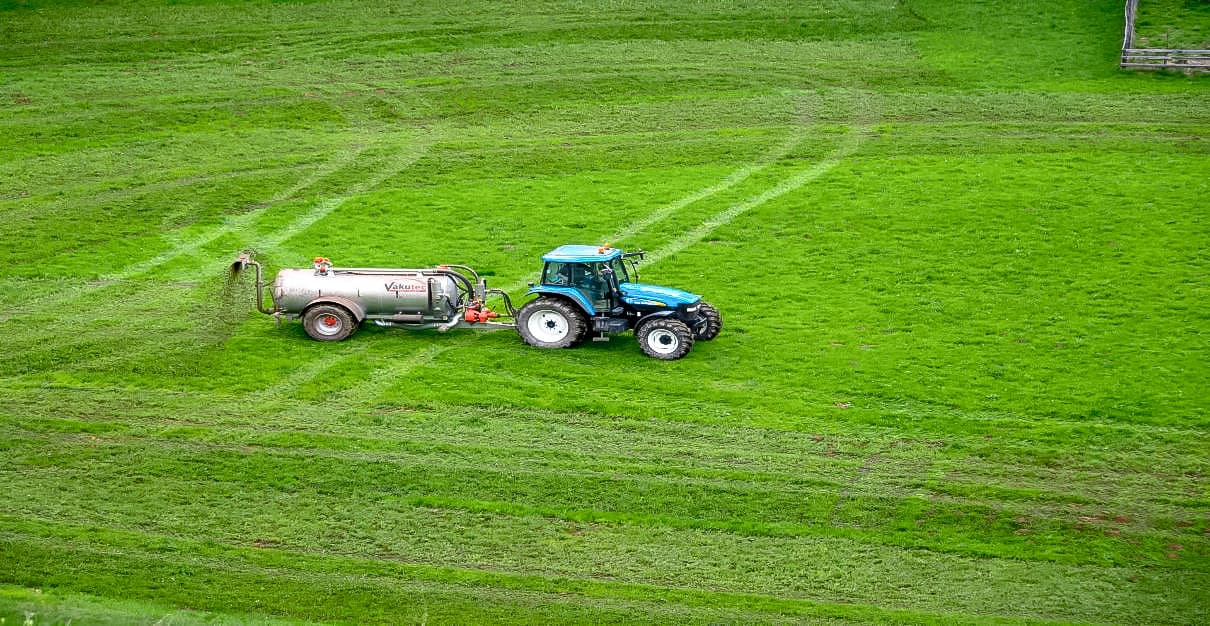Every year around the world humans produce more than 300 million tons of plastic, much of which is single-use. This means that once it has served its purpose for a few hours or even a day, it’s disposed of in landfills, ends up in rivers, or is washed into the ocean where it breaks down into tiny pieces known as microplastics.
While ocean plastic pollution has been studied for many years, microplastics’ effects on humans and marine life is still largely unknown. Researchers have found microplastics in our soil, in bottled water, and in the air we breathe. In fact, one study conducted found that humans ingest at least 74,000 microplastic particles every year just by regular eating, drinking, and breathing.
Largely invisible to the naked eye, microplastics are most dangerous due to their potential to absorb toxic chemicals and the ease with which they can be ingested by marine animals. These toxins are then biomagnified, making their way up the food chain where they may eventually be consumed by humans.
So, what exactly are microplastics, how are they created, and what can we do about them before the situation gets out of hand? We will discuss the dangers of microplastics here.
In this article, we’ll discuss how old do you have to be to scuba dive and the minimum scuba certification age. We’ll also address the physical, health and emotional considerations that all parents should be aware of before allowing their child to dive.

What Are Microplastics And How Are They Created?
Microplastics are tiny pieces of plastic that measure between 1 and 5 micrometers in size. Those that are between 100 nanometers and 1 micrometers are defined as sub-microplastics while anything smaller is considered a nanoplastic. Because of their tiny size, most microplastics are invisible to the naked eye, which makes dealing with them tricky.
Among the most common microplastics in existence are microbeads. These tiny plastic beads are used in exfoliating and personal care products, clothing made from synthetic plastic fibers and nurdles (small plastic pellets that are melted and molded to form different plastic products). All of these are considered primary microplastics as they are manufactured as particles less than 5 millimeters in size.
Secondary microplastics result from large plastic objects being broken down through exposure to wind, wave action, and ultraviolet rays. Over time, they’ll eventually become small enough that they are termed microplastics.
Where Are Microplastics Coming From?
Microplastics often end up in our waterways by passing through sewage treatment plants whose filters are too large to catch them. In some cases, this sewage sludge is used as an agricultural fertilizer, meaning microplastic content ends up washed into rivers and streams.
Researchers are still unsure how microplastics move across land and whether they stay in the topsoil or become integrated down into the soil column. Not only would this pose a risk to groundwater resources but also the plant life that relies on the soil to flourish. Studies have shown that earthworms exposed to microplastics in soil suffer from gut inflammation, as well as slower growth and higher mortality rates. So, while much of the focus on microplastic pollution has been on the impact on marine life, it may also be doing harm to terrestrial species.
Microplastics have also been detected in the air, although at what concentrations is still unknown. It’s believed that the main source of airborne microplastics is also fertilizers, which dry out on land and eventually get picked up by the wind and carried away. But microplastics are not only found outdoors. Indoor environments featuring plastic fibers and dusty floors also contain these tiny particles, which are unknowingly inhaled by humans. One research study indicated that we probably ingest microplastics at a rate of 11 particles per hour.
How Can We Detect Microplastic Particles?
Detecting microplastics is tricky due to the tiny size of the particles involved. That being said, there are several different methods currently being harnessed to detect and identify microplastics. Thermal analysis can be paired with gas chromatography and mass spectrometry to figure out the quantity and types of plastic particles in a sample, as well as any additives it may contain. For determining the size of particles, spectroscopic methods can be used with infrared micro-spectroscopy to analyze particles as small as 20 micrometers.
At the Technical University of Munich’s Institute of Hydrochemistry, researchers have used Raman microscopic analysis to determine the number of microplastic particles, the range of particle sizes, and the polymer types of samples. Their research has found the presence of microplastic particles in the digestive tracts of water fleas and within the bodies of mussels.

What Are The Dangers Of Microplastics and Effects On Human Health?
It’s still unclear what the dangers of microplastics on human health are. But we do know that humans and other species can absorb microplastic particles with relative ease. While that doesn’t prove their toxicity, scientists have found that even inert and non-toxic substances can have toxic effects once they reach a certain level of concentration.
Of particular concern are the microplastics in the ocean that pass through wastewater or sewage treatment plants, as they risk picking up harmful bacteria along the way. If they end up in our oceans or rivers and are ingested by marine life, then these harmful bacteria may eventually make its way up the food chain and be consumed by humans.
In some cases, plastics absorb pollutants and heavy metals on their surfaces which may be toxic to humans if ingested. Persistent organic pollutants (POPs) are widely distributed in the marine environment and studies have shown that they can easily transfer from plastics ingested by animals to the animal’s tissues becoming concentrated.

What Happens If You Eat Seafood With Plastic In It?
Microplastics have been found in many fish and seafood species that are regularly consumed by humans. Research into commercial fish species in the South Pacific has found that microplastics were detected in up to 25% of fish species studied from Auckland, Samoa, Tahiti, Rapa Nui, and Easter Island. While most of the microplastics were found in the gut of the animal (which is usually removed before consumption), humans may still be at risk of being exposed to contaminants that have traveled into other bodily tissues.
To only add to this issue, various chemicals are often added to plastics during their manufacturing. Once exposed to ultraviolet light from the sun, these may undergo a chemical reaction and leach into the surrounding environment. Some of these colorants and chemicals have been linked to human health issues when ingested or released into the atmosphere (through the burning of plastic waste). If consumed by marine species, they can be gradually absorbed up the food chain and biomagnified before reaching our dinner tables.

There is concern that microplastic particles could potentially leach phthalates and bisphenol A, which is known to interfere with the proper functioning of hormones. Also found in some plastic is styrene, a chemical that has been linked to nervous system issues, hearing loss, and cancer. Polychlorinated biphenyls (PCBs) may also be accumulated by microplastic particles and have been associated with the weakening of the immune system, reproductive issues, and various types of cancer.
Aside from its presence in seafood, microplastics have also been found in common table salt and tap water, as well as in up to 90% of bottled water. If you’re wondering what health risks there are for drinking microplastics, research is still in its infancy. We are also yet to fully understand the harm caused by our exposure to microplastics in the household dust or the air we breathe on a daily basis.
While microplastics may be too big to pass into our cells, once broken down to the size of nanoplastics, it’s possible that they could be absorbed by our circulatory systems and end up in our organs.
What Are The Dangers Of Microplastics And Effects On Marine Life?
Aside from their potential threats to humans, microplastics also pose a severe risk to marine life from tiny zooplankton to huge whales ingesting them daily. Research shows that microplastics eaten by large marine animals will usually pass through their bodies, but in some cases, they can be retained in the gut for long periods – risking damage to the animal’s internal tissues. Nanoplastics, on the other hand, can easily pass through the gut wall and move to different organs where their damage could be more lethal.
When it comes to smaller marine and freshwater animals, research indicates that ingesting microplastics leads to reduced reproduction and growth rates in some species. Not only is this a result of not obtaining the required nutrients (because digestible food isn’t being consumed) but the microplastics can cause internal lacerations or inflammation. Particularly vulnerable are filter feeders such as mussels and oysters, with high volumes of water (often containing microplastics) passing through their bodies every day.
What Can You Change About Your Lifestyle To Reduce Your Microplastic Output?
Despite the dangers caused by plastic waste, plastic still has a lot of advantages over other materials and can be employed in a variety of fields to benefit humans. That being said, experts agree that we need to reduce the amount of disposable plastics we use and introduce to the environment.
Aside from switching to plastic-free alternatives made from biodegradable materials, we can also opt to use reusable plastics that won’t end up in our waterways. Taking a reusable shopping bag to the supermarket, saying “no” to unnecessary straws, and buying takeaway in biodegradable containers are all simple ways we can reduce our personal microplastic output. We can avoid buying products that contain microbeads, shop for clothing made from natural fibers rather than synthetic ones, and become informed about the types of fertilizers being used to grow the food we eat.
To reduce your exposure to microplastics, experts recommend that you drink tap water rather than bottled water, which has roughly double the amount of microplastics. Some plastic food containers are manufactured with phthalates, styrene, and bisphenols, which may be damaging to human health. So, it’s a good idea to understand and check the labeling information on plastic packaging to inform yourself before purchasing. In addition to this, heated plastics run the risk of leaching chemicals into food, so avoid heating microwavable food in plastic containers or putting it in your dishwasher where it may be exposed to high temperatures.

As a consumer, you can have a big impact through the decisions you make every day at the supermarket, when purchasing takeaways, or when shopping online. Opt for products packaged in reusable, non-plastic containers whenever possible or bring your own and ask it to be filled. Glass is a better alternative to plastic and can be used to store a wide variety of both fresh and dry foods.
Another easy way to reduce the amount of microplastic ending up in our environment is to show support for policies that limit the use of single-use plastics. By sharing information and articles about the effects of plastic waste and microplastics on your social media channels, you’re spreading knowledge that will help others make valuable lifestyle changes too.
FINAL THOUGHTS
With global plastic production expected to triple by 2050, there could be a vast increase in the amount of microplastics in our environment. Our understanding of how these microplastics affect human health and our marine life is still limited, with more research needed urgently. But the early warning signs are there, every piece of plastic we throw away carries with it a potential to do harm.
We know the dangers of microplastics and that they take hundreds of years to biodegrade. In fact, every piece of plastic ever manufactured still exists somewhere on earth. The dangers of microplastics in the ocean and on land aren’t problems that are going to go away unless we take clear and concise action as globally minded individuals.
FAQs
Dangers Of Microplastics
1. What is the main contributor to microplastic creation?
Agricultural fertilizers are one of the main contributors. Their microplastic content is retained in the soil, washed into rivers and streams, or eventually ends up in the ocean. Once dried, fertilizer microplastics can also be carried by wind and end up suspended in the air we breathe. Other sources of primary microplastics include microbeads in the ocean (tiny plastic beads that are used in exfoliating and personal care products) and synthetic plastic fibers used in the manufacturing of clothing.
The other type of microplastics are secondary microplastics, which are created from larger plastic objects that include plastic bottles, food containers, and fishing nets. So why is plastic bad? Over time, it can be broken down by exposure to ultraviolet rays, wind, and wave action, eventually ending up as tiny microplastics and leaching contaminants into the surrounding environment.
2. Can you ingest microplastics?
It’s been estimated that the average human ingests thousands of microplastic particles each year. This may be through the consumption of microplastics in fish, drinking bottled or tap water, or through the necessary activity of breathing air. It can also be from tiny bits of plastic in food because of its packaging.
Microplastics have been found in many fish and seafood species that are regularly consumed by humans, as well as in common table salt and tap water. Up to 90% of bottled water is thought to contain microplastics and they have also been detected in household dust. Through the simple acts of breathing, eating, and drinking, it’s thought that the average American ingests more than 74,000 microplastic particles every year!
3. Are microplastics toxic?
It’s still unclear as to just how toxic microplastics might be to humans. But we do know that even non-toxic substances can become toxic at certain concentration levels or after exposure to ultraviolet rays. Various chemicals that are linked to human health risks are added to plastics during their manufacturing and may end up being leaching into the surrounding environment.
Some microplastics pass through wastewater or sewage treatment plants before reaching the ocean and run the risk of absorbing harmful bacteria along the way. In other cases, microplastics absorb toxic pollutants and heavy metals on their surfaces when suspended in the ocean. They may then be ingested by marine life, biomagnified, and later consumed by humans. Persistent organic pollutants (POPs) are abundant in our marine environment and can easily be transferred from microplastics to animal tissues where they can have toxic consequences.
4. What are the health risks of ingesting microplastics?
The human health risks of ingesting microplastics are still largely unknown. Of most concern are the toxic pollutants and heavy metals absorbed by microplastics and the effect they may have on the human body. Once ingested, persistent organic pollutants (POPs) can make their way into bodily tissues. Some of these have been associated with the improper functioning of hormones, nervous system issues, a weakening of the immune system, reproductive concerns, and various cancers. The dangers of microplastics are of particular concern when the products are manufactured using phthalates, bisphenol A and styrene.
5. How do microplastics harm marine life?
The effects of microplastics on marine life affect those both large and small. In some cases, the particles pass through the animals, while in others they are retained in the gut and can lead to internal damage through lacerations or inflammation. If they break down into nanoplastics, they may end up passing through the wall of the gut and traveling to various organs.
Research indicates that ingesting microplastics is associated with reduced reproduction and growth rates in some species as the animals don’t receive the nutrients they require from digestible food. Filter feeders such as mussels and oysters are particularly vulnerable due to the high volume of microplastic-filled water that passes through their bodies every day.
SOURCES
Dangers Of Microplastics
- The Facts, plasticoceans.org
- Americans May Be Ingesting Thousands of Microplastics Every Year, smithsonianmag.org
- How Dangerous Is Microplastic?, phys.org
- It’s Not Just The Oceans: Microplastic Pollution Is All Around Us, cnn.com
- How Damaging Is Breathing In Microplastics?, plasticsoupfoundation.org
- How Harmful Are Microplastics, sciencelearn.org.nz
- You’re Literally Eating Microplastics, washingtonpost.com
- The New Plastics Economy, weforum.org
REACH OUT
We always speak about ‘They’. They need to do something about the plastic problem. They need to stop overfishing. What They are doing to our oceans is simply unacceptable. But who are They?
The government? The government is an administrative body elected by the people. The government exists only to serve out the needs of those people. They is in fact our society, a collection of individuals. You are one of those individuals, and so am I. There is no They, there is only We, and We are all part of the problem. However, We can choose to be part of the solution instead. Sure, sometimes it feels like one individual has such a small chance of creating meaningful change – so why bother. But remember, if everyone had that mindset, there is 100% chance that nothing will change.
We only have one Earth. We can make a difference.
You have a Part to Play – join us in our fight against the Ecological Disaster of our Age.


